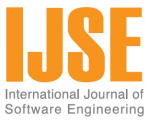ABSTRACT Over the past 30 years, many software reliability growth models (SRGM) have been proposed. Object-oriented software development practices are being rapidly adopted within increasingly complex systems, including real-time and concurrent system applications. To address reliability issues in designing object oriented software for this concurrent, time-critical system, this paper reviews an approach using the communication variables. Often, it is assumed that detected faults are immediately corrected when mathematical models are developed. This assumption may not be realistic in practice because the time to remove a detected fault depends on the complexity of the fault, the skill and experience of personnel, the size of debugging team, and the technique being used, and so on. During software testing, practical experiences show that mutually independent faults can be directly detected and removed, but mutually dependent faults can be removed iff the leading faults have been removed. That is, dependent faults may not be immediately removed, and the fault removal process lags behind the fault detection process. In this paper, we will first give a review of fault detection & correction processes in software reliability modeling. We will then illustrate the fact that detected faults cannot be immediately corrected with several examples. We also discuss the software fault dependency in detail, and study how to incorporate both fault dependency and debugging time lag into software reliability modeling. The proposed models are fairly general models that cover a variety of known SRGM under different conditions. Numerical examples are presented, and the results show that the proposed framework to incorporate both fault dependency and debugging time lag for SRGM has a better prediction capability. In addition, an optimal software release policy for the proposed models, based on cost-reliability criterion, is proposed.
Reliability Evaluation of Object Oriented Software Systems Using Communication Variabiles – A Review
1 file(s) 258.00 KB
Authors
R. Chinnaiyan
- Organization : Department of Computer Applications, AVC College of Engineering , (India (TN))
- Email : vijayachinns@gmail.com
S. Somasundaram
- Organization : Department of Mathematics, Coimbatore Institute of Technology (India(TN))
- Email : somos2005@gmail.com
